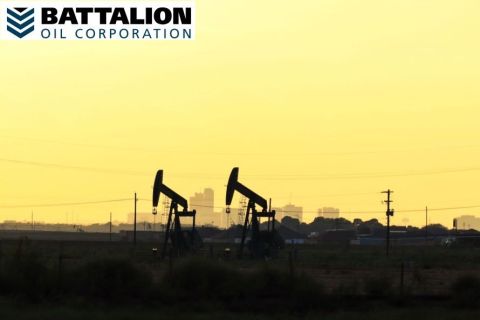Activity in the oil and gas sector accelerated in the first quarter as company outlooks improved, according to a survey of oil executives released on March 23 by the Federal Reserve Bank of Dallas.
U.S. crude will sell for an average of $93/bbl by the end of the year and natural gas prices at the largest U.S. hub will average $4.57 per million British thermal units (MMBtu), according to the survey of oil executives from Texas, Louisiana and New Mexico.
An index of activity by oil and gas companies in the region rose to 56 from 42.6 in the fourth quarter, marking the highest reading since the survey began six years ago, the survey said.
Still, executives lamented they are facing “unprecedented” supply chain and labor shortages that are affecting their ability to expand output and add employees despite sharply higher oil and gas prices.
Oil prices are at their highest level in over a decade after Russia's Feb. 24 invasion of Ukraine and subsequent sanctions on its oil exports. Russia calls its military action a “special operation.”
WTI, the U.S. crude oil benchmark, was trading at over $114/bbl on March 21, up more than 50% from the start of the year.
Nearly all oilfield services companies surveyed said they were facing higher costs, and some said labor shortages are persisting. One said it had rigs available, but could not find workers.
“The supply-chain issues and shortage of materials are unprecedented,” one respondent said, adding, “We are also facing serious workforce issues because a meaningful portion of the labor force left the industry during the downturn and due to the vilification of the oil and gas industry.”
The average oil price needed to cover operating expenses for an existing well was $34/bbl, respondents said, up roughly 10% from last year. The average price needed to profitably drill a new well was $56/bbl, up about 8% from last year.
More than 40% of respondents said oil prices will need to be between $80/bbl and $99/bbl to push publicly traded firms to significantly increase their production. Nearly 60% of those surveyed said pressure from shareholders to increase returns remains the primary driver behind public companies’ reluctance to expand output.
Still, some 15% of large firms surveyed said they planned to increase growth by more than 30% this year, while 23% of smaller firms anticipate that level of growth, the survey showed.
The survey, taken in mid-March, included 141 oil and gas firms, of which 91 were exploration and production companies and 50 were oilfield service firms.
Recommended Reading
Battalion Accepts Smaller Buyout Offer From Fury Resources
2024-09-19 - Permian Basin producer Battalion Oil agreed to an updated proposal to be acquired by Fury Resources for $7 per share in cash after an initial offer last year of $9.80 per share.
CEO: Ovintiv Passes on Permian Prices for More Montney Condensate
2024-11-14 - Rumored to be a potential buyer in the Permian Basin, Ovintiv instead struck a deal for lower-cost oil and condensate assets in Alberta’s Montney Shale.
'A Renewed Look': Central Basin Platform's Old Rock Gains New Interest
2024-10-29 - As majors prune their portfolios to sell non-core assets, M&A activity is heating up on the Permian’s Central Basin Platform and Northwest Shelf—and Ring Energy hopes to be a buyer.
Jefferies: With Permian Locked Up, E&Ps Hunt for New L48 Runway
2024-11-26 - With the core of the Permian Basin largely locked up, “intrepid operators” are hunting for runway in more nascent Lower 48 basins and in less developed Permian benches.
Exclusive: Surge Energy Seeks Midland M&A with $1.3B in Dry Powder
2024-11-19 - Surge Energy is one of the largest private oil producers in the Permian Basin. With $1.3 billion in dry powder to put to work, Surge is scouring the northern Midland Basin for M&A, executive Travis Guidry told Hart Energy.
Comments
Add new comment
This conversation is moderated according to Hart Energy community rules. Please read the rules before joining the discussion. If you’re experiencing any technical problems, please contact our customer care team.





